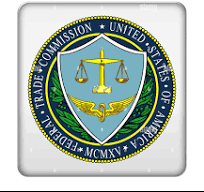 Enacted in 1936 the Robinson-Patman Act (RPA) protects small businesses by promoting fairness and competition among the buyers and sellers of goods by prohibiting discriminatory actions related to pricing. Further, the RPA prevents firms from “skirting the price discrimination” issue by using volume rebates, processing/ handling fees, advertising, and promotional allowances to leverage their scale and gain an unfair advantage over smaller competitors.
Enacted in 1936 the Robinson-Patman Act (RPA) protects small businesses by promoting fairness and competition among the buyers and sellers of goods by prohibiting discriminatory actions related to pricing. Further, the RPA prevents firms from “skirting the price discrimination” issue by using volume rebates, processing/ handling fees, advertising, and promotional allowances to leverage their scale and gain an unfair advantage over smaller competitors.
While enforcement of the RPA has waned since the 1990’s, earlier this year a group of congressmen urged the Federal Trade Commission (FTC) to reinvigorate its use of this tool to “promote fair competition” in the food and retail industry.”
What was the impetus for this move? The degree of consolidation that has occurred in the sector since the RPA was introduced. Today, the top four food retailers account for over one-third of grocery sales and four suppliers account for as much as 60% of sales in most grocery categories. Of note the target of the FTC’s enforcement actions in this area have typically been manufacturers.
Aside from the issue of consolidation, there is another development of note that has emerged since the RPA was enacted… the creation of Retail Media Networks (RMNs). According to Group M advertisers spent $45 billion on RMN’s in 2023 which accounted for almost 11% of total U.S. ad expenditures.
So how are the RPA and advertiser use of RMN’s related?
The answer comes down to how brand marketers are funding their RMN purchases. If a brand’s RMN investment is paid for using trade marketing or promotional allowances (which is often the case) then the RPA requires that such allowances be made available to all retail customers on an “equal and proportionate” basis.
Better coordination between an advertiser’s Trade Development and Marketing teams is required to assess and monitor the organization’s RMN spend to ensure RPA compliance and to optimize that investment.
Additionally, seeking the support of in-house legal and or engaging outside counsel specializing in anti-trust and trade regulation can further minimize the risk of non-compliance. This is particularly so if the RMN investment is to be funded out of a trade-marketing or promotional allowance fund.
In the words of Tom Graves, U.S. Congressman and businessman: “Let’s make it simple: Government control means uniformity, regulation, fees, inspection, and yes, compliance.”
